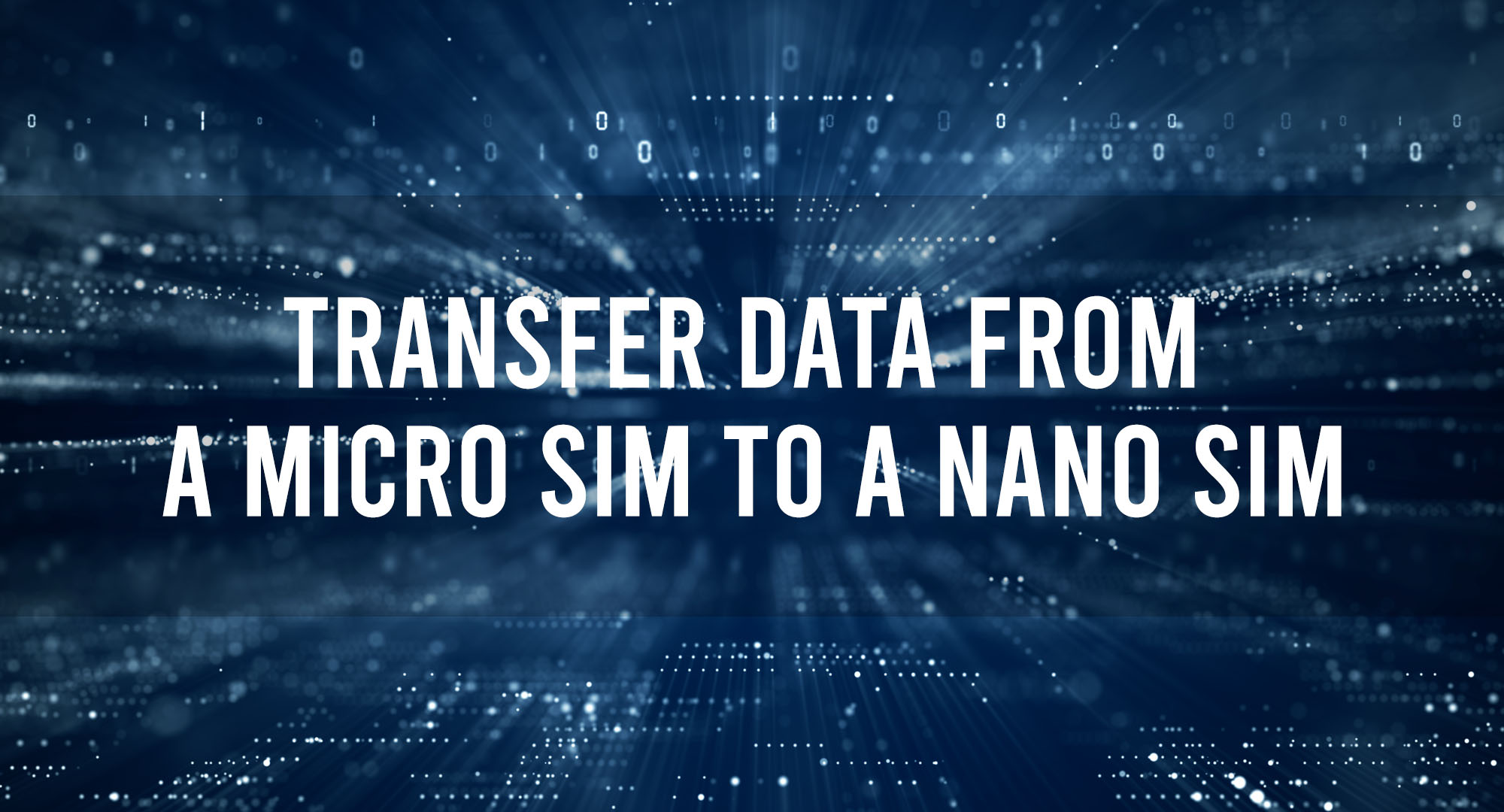Micro SIMs and Nano SIMs are simply different types of Subscriber Identity Module (SIM) cards. They hold the key to your cellular service, storing your phone number, carrier information, and personal data like contacts. The main difference between them lies in their size: Micro SIMs are larger than Nano SIMs, but both serve the same purpose.
Many modern smartphones have shifted from the traditional Micro SIM cards to the newer, smaller Nano SIMs. These Nano SIMs, being almost 40% smaller than Micro SIMs, allow manufacturers to design sleeker, more compact devices. The question arises: “What happens to the data on my old Micro SIM?”. The answer is simple – you’ll need to transfer it.
In the context of SIM cards, the most crucial data typically pertains to your contacts. The need to transfer contacts and other vital information is becoming increasingly relevant as we upgrade our phones and want to maintain continuity, preventing the loss of valuable connections and data. While it might seem like a daunting task, I assure you, it’s not that complicated.
Essential Tools for Successful SIM Data Transfer
Table of Contents
Before we jump into the process, let’s first discuss the essential tools you’ll need. Here’s a checklist for you:
- Your Mobile Devices: Your old phone with the Micro SIM and the new one accepting a Nano SIM.
- SIM Card Adapter: This allows your Nano SIM to fit into the Micro SIM slot if necessary.
- SIM Card Reader: You’ll need this if your computer doesn’t have a built-in reader.
- A PC: A computer will aid in the transfer process, especially for backing up data.
Now, with your tools ready, let’s get started with the process.
How to Transfer Contacts from Micro SIM to Nano SIM?
- Back-Up Contacts: On your old phone, navigate to your contacts app. Look for an option to export or back up your contacts, usually found in the settings. Most phones can back up contacts in a .vcf (vCard) file. Save this file to your device.
- Transfer File to PC: Connect your old phone to your PC and transfer the .vcf file. You can either use a USB cable or a cloud service like Google Drive.
- Import to New Phone: Connect your new phone to the PC, copy the .vcf file, then disconnect. Go to the contacts app, find the import option in settings, and select the .vcf file. Your contacts will now populate on your new phone.
Safeguarding Your Data: Backing Up Before the Transfer
As with any data migration, it’s always smart to have a backup before you start. This acts as a safety net if something goes wrong. Here’s how you can do it:
- Back Up SIM Data: As discussed before, create a .vcf file for your contacts.
- Backup Additional Data: If you have messages or other information on your SIM, use a dedicated backup app to save it.
- Cloud Backup: Save the backup files on cloud services like Google Drive or Dropbox for added security.
Troubleshooting Common Issues During SIM Data Transfer
Despite our best efforts, we might face a few hiccups during the process. Here are some common issues and their solutions:
- Incomplete Contact Transfer: If you find missing contacts, check the .vcf file on your PC. If it’s complete, try the import process again.
- SIM Not Detected: Ensure you’ve inserted the SIM properly in your new phone. If it’s still not detected, you might need a replacement SIM.
- Cannot Read .vcf File: If your new phone cannot read the .vcf file, check if it’s corrupted. Try creating a new backup from the old phone and importing it again.
Just remember, there’s always a way to resolve these issues, and usually, it’s simpler than you think!
Frequently Asked Questions
Can I transfer data from a Micro SIM to a Nano SIM without a computer?
While it’s possible to transfer some data without a computer, using one can make the process much easier and more efficient.
What happens if I lose my data during the transfer?
If you’ve backed up your data before the transfer, you can easily restore it. If not, you may need to contact your carrier for assistance.
Can I use the same SIM card in different phones?
Yes, as long as the phones use the same type of SIM card (Micro or Nano), you can use the same SIM in different phones.
Conclusion
Transitioning from a Micro SIM to a Nano SIM might seem like a big step, but with the right tools and guidance, it’s a breeze. By embracing this change, you’re not just keeping up with technology – you’re paving the way for a more streamlined, efficient future.

Timothy is a tech enthusiast and has been working in the industry for the past 10 years. He has a vast knowledge when comes to technology and likes to help people with this knowledge.
